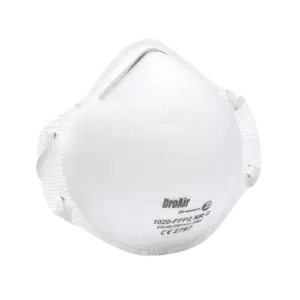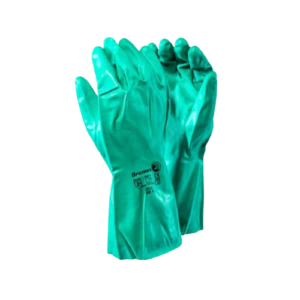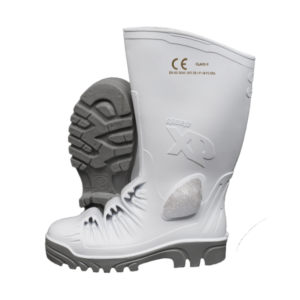Guidelines for Handling Medical Waste
When considering individuals responsible for managing medical waste, healthcare facility personnel are typically the first to come to mind. Nevertheless, a wide range of other professionals, including transporters, and waste processing employees, may also be at risk of exposure to medical waste. Despite best efforts to take necessary precautions, the potential for spills or accidental exposure remains a constant concern.
Some staff may require specialised PPE, such as incinerator operators, who face additional hazards such as high surface temperatures or fire hazards.
PPE for the handling of Medical Waste
- Face masks – disposable moulded FFP2
- Eyewear – safety glasses for splash protection
- Gloves – due to the lack of gloves that provide needlestick, cut and chemical protection in one glove, the best practice is to double glove.
- Needlestick resistant – level 5 as per ANSI/ISEA 105 (ASTM F2878-10)
- Cut resistant level A9 as per ANSI/ISEA 105, or level F as per EN 388
- Chemical handling as per EN 374
- Safety boots
- PVC gumboot with toe, midsole, and metatarsal protection
- Midsole protection is critical due to the risk of sharps
- Overalls – acid resistant and flame retardant
- Chemical resistant apron



Safe Work Practices for Handling Medical Waste
-
Adhere to the standard operating procedures (SOPs) and follow your supervisor’s guidelines on reporting and managing medical waste.
-
Be proactive by learning about potential wastes you might encounter and the appropriate actions to take if you find them. Ask your supervisor about medical waste disposal at your facility, procedures for handling biohazardous materials, necessary personal protective equipment (PPE), and what to do if exposed to potentially infectious waste.
-
Stay vigilant to potential hazards.
-
If you encounter biohazard-marked materials, sharps, or substances that resemble medical waste, assume they are hazardous. Notify your supervisor before proceeding with any actions. Your supervisor may decide to reject the waste and request the hauler or disposer to collect it.
-
Wear PPE to protect against potential exposure. Choose puncture-resistant boots with toe and metatarsal protection, and double glove puncture and chemical resistant gloves for added protection, and cover skin surfaces that could be exposed to infectious agents. Safety glasses and hard hats may also provide protection against splashes.
-
In case of spills or other unusual hazards, you may require additional equipment, such as respirators, face shields, dust masks, boot covers, or impervious clothing.
-
Cover any open wounds or non-intact skin while on duty.
-
Avoid direct contact with medical waste, whether in biohazard bags or sharps containers. Use tools like shovels to move items if necessary.
-
Never handle waste with bare hands.
-
Be cautious of potential medical waste presence when handling all waste or cleaning machinery and equipment. Be particularly mindful of sharps that can become lodged in vehicles’ wheels and tracks.
-
Whenever possible, use tools or cleaning methods other than your hands. If hand-use is necessary, wear protective gloves.
-
Avoid reaching into unseen areas.
-
Use brooms to remove large broken glass pieces and tongs for smaller fragments. Never use fingers for glass removal.
-
Refrain from handling personal items with gloved hands.
-
Wash hands after glove removal, even if gloves are intact.
-
Always wash hands before eating, drinking, smoking, or leaving work.
-
Remove any contaminated clothing, boots, and gloves as soon as possible, ensuring minimal contact with exposed skin surfaces.
-
Use gloves to remove other contaminated items.
-
Dispose of or decontaminate contaminated PPE in sealable, leak-proof bags or containers.
-
In case of contact with infectious waste, thoroughly wash hands and any exposed skin with warm water and soap or waterless antiseptic cleaner if soap and water are unavailable.
-
Promptly report any work-related exposure to blood or bodily fluids and seek medical attention.
Common exposure sources to hazardous materials in healthcare facilities include:
- Accidental contact: Improper handling or disposal of needles and medical devices can result in unintended direct contact.
- Insufficient containment: Medical devices, solid waste, and liquids must be adequately contained to prevent access by personnel and subsequent exposure.
- Airborne exposure: Dust particles in a medical setting may contain harmful components, such as hazardous substances and infectious agents.
- Container breakage or leakage: The appropriate disposal containers should be used for collecting and disposing of medical equipment and waste. Broken or leaking containers pose a risk for exposure to hazardous materials and must be properly managed.
- Splashback: Improper handling of contaminated items or inadequate safety protocols for using hazardous materials (e.g., cleaning agents) can lead to splashback. It can also occur during autoclaving if the process is mishandled or if the item being decontaminated contains liquid that becomes aerosolized due to pressure changes in the chamber.
